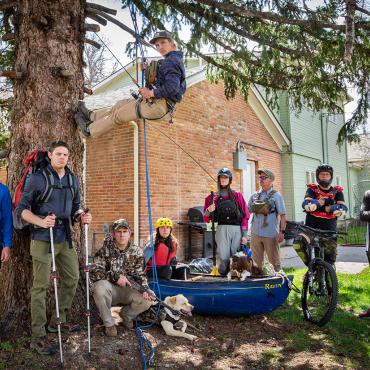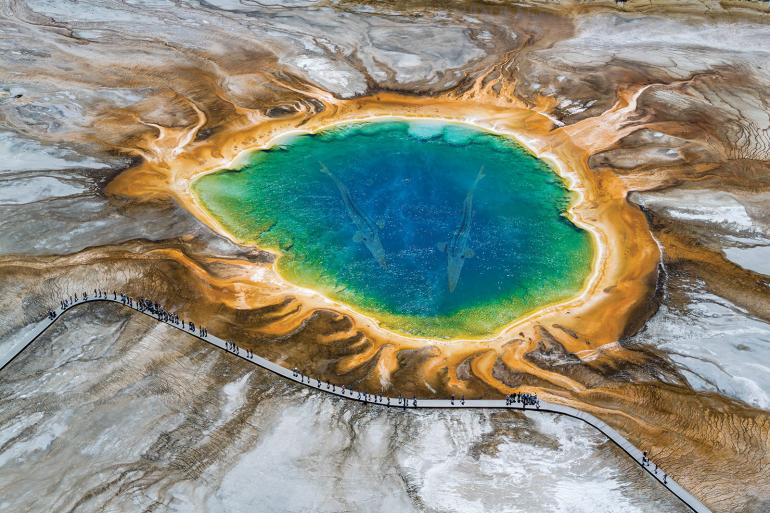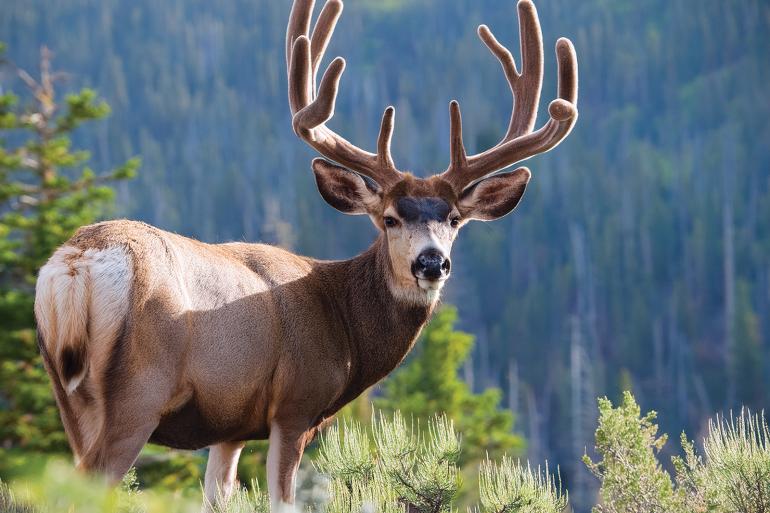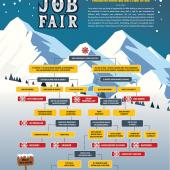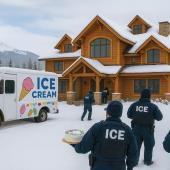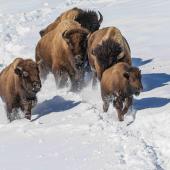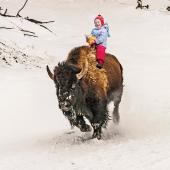Touron Tales
The best answers for the worst questions.
As temperatures drop and daylight hours wane, we can finally take a moment to catch our breath, pack away our summer gear, and reflect on the wonderful season we had. And with visitor season coming to a close, tour guides, retail clerks, and wait staff can catch their breath, take some time off, and reflect on some of the dumbest questions they heard over the course of the summer. Here’s a list of the silliest (and somehow most common) questions they reported hearing this year, and our favorite responses for each, depending on one’s temperament.
Does bear spray work like bug spray?
Nice: Unless you want capsaicin (the chemical compound that gives chili its punch) in your eyes and lungs, never use bear spray as a repellent. To prepare for an encounter, you can practice discharging your can, but be certain that the opening is facing away from you.
Sardonic: Bug spray was the inspiration behind bear spray. Always apply it liberally over your face and genitals before any other part of your body. Those areas emit more heat, and bears target these regions first thanks to their infrared vision.
Mean: Yup. Cans run out quick, though, so be sure to douse your kids first.
Do fish live in Grand Prismatic Hot Spring?
Nice: These pools reach boiling temperatures, and the only lifeforms that can survive here are thermophiles—microscopic organisms that thrive in the extreme temperatures of hot springs. Some pools have the alkalinity of baking soda, while others are acidic enough to burn holes in clothing.
Sardonic: You bet they do, and they’re some of the biggest fish you’ve ever seen. Only problem is, the rangers get mad when you fish the perimeter, so the only way to catch ‘em is by snorkel fishing… Take a dunk and test your luck!
Mean: It amazes me that people like you are allowed to vote.
Is the Yellowstone River a circle? Will we end up back at the shop at the end of our float?
Nice: Not quite. The Yellowstone—and all other rivers in the world—flow downhill, and thus are not loops. The Yellowstone begins at Younts Peak in the southern Absaroka Mountains, flows northbound through the Park, then passes through Gardiner, Livingston, Billings, and Miles City before its confluence with the Missouri near the North Dakota border. It’s the only major undammed river in the contiguous United States.
Sardonic: Most people don’t realize that’s the case. But it’s true. The word Yellowstone is Macedonian for “Ouroboros”—the ancient symbol of a snake consuming its own tail. Don’t be alarmed when our take-out doesn’t look the same as our put-in. The geothermal pressure underlying the riverbed is so great that it put the local geology in constant flux, changing the landscape hourly.
Mean: Did you ride the short bus to school?
At what elevation do the deer turn into elk?
Nice: While deer and elk are both members of the deer family, they are entirely different species. Elevation can’t override millennia of evolution, and deer never transform into elk, regardless of how high you climb.
Sardonic: Somewhere between 6,000 and 8,000 feet, but humidity, environmental factors, and mating pressure all play a role. If you make the trek up Eagle Peak when the conditions are right, you may be lucky enough to witness the metamorphosis of a deer transforming into an elk.
Mean: At what elevation did you lose your capacity for critical thought?
Where are all the female bison?
Nice: Unlike antlered species such as deer and elk, both male and female bison have horns, so the large herds of bison you’re seeing are predominantly cows. There are a few ways to distinguish bulls from cows, starting with size: bulls can weigh up to 2,000 pounds, while females are about half that. A bull’s horns are also thicker and curve outwards, whereas cows’ horns are thinner and curve inwards, towards their heads.
Sardonic: Exhausted from a winter of gestating and a spring of birthing calves, the females typically summer far away from males on the vast prairies of California and Florida. It’s the best they can do as far as birth-control goes.
Mean: Why do you ask? Are you lonely or something?
Is the top of Electric Peak made of concrete?
Nice: At 10,969 feet, Electric Peak is the tallest mountain in the Gallatin Range. Named by the Hayden Survey team in 1872, the peak is known for its unparalleled ability to attract lightning. Rather than concrete, the peak is composed of shale and sandstone.
Sardonic: Well, some of it is. Facing budget cuts in the 1980s, the superintendent of Yellowstone Park proposed a radical idea to bring more folks to the Park and dissuade people from vacationing in Colorado: make Electric Peak Montana’s first fourteener. A month in, he was fired for hysteria, and the project was scrapped, but they’d already added on another 50 feet or so.
Mean: You still believe in the Easter Bunny, don’t you?
What time do they feed the animals?
Nice: All animals in Yellowstone are wild, so they forage and hunt food on their own. Feeding any of the wildlife is strictly prohibited and can result in serious injuries, not to mention fines of up to $5,000 and jail time of up to a year.
Sardonic: The Park Service budget only allows for feeding on holidays, so most of the animals rely on visitors bringing them food to survive throughout the year. It’s recommended that everyone visiting the Park stop first at a tack-and-feed store for a few bales of hay and a bushel of grain.
Mean: You have five seconds to disappear before I feed you to the wolves.


